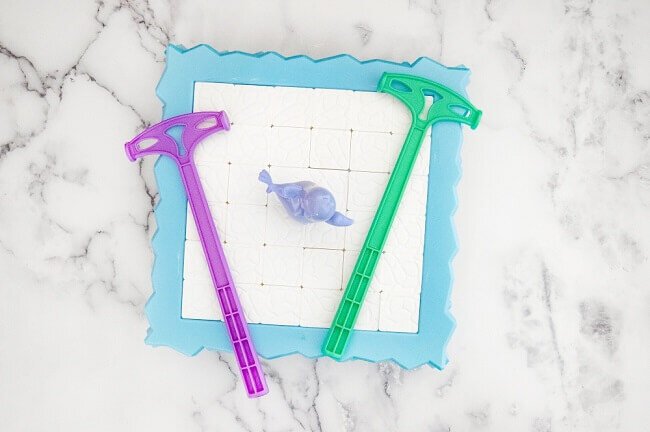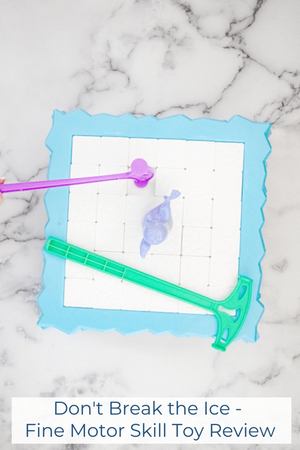Don't Break The Ice - Fine Motor Skill Toy Review
Disclaimer: this post may contain affiliate links from various sites, including Amazon. As a member of the Amazon associates program, we earn a small amount from qualifying purchases when you use our referral link. This does not add any additional cost to you and helps with the expenses of keeping in Life and Littles up and running.
THROWBACK! When I first got hired at the pediatric clinic, I inherited an entire closet of games and activities to play with my kiddos. I spent at least an hour exploring all my new goodies and when I stumbled upon Don’t Break the Ice. I was immediately overwhelmed by a wave of nostalgia. I have vivid memories of playing this game with my cousins when I was little. As an only child I didn’t play a lot of board games because well, they need at least two people. So any time I got to spend time with my cousins, it was on! Hours were spent playing Yahtzee, Candy Land, Pretty Pretty Princess and Don’t Break the Ice.
There are a lot of games that I have in my closet that have gotten a “face lift” since I was a kid, but Don’t Break the Ice looks almost exactly as I remember it. The only difference that I have found is my game involved saving a polar bear from his inevitable dunk in the icy water, and the new game has an adorable penguin named Phillip. The game board, ice cubes and tiny hammers look almost exactly the same.
Now why would we keep a game like this in a pediatric clinic? This game is an amazing tool to “trick” kids into working on their fine motor skills! If you remember, to set up the game you must place each ice cube into a frame and create a grid for the penguin to sit on top of. Placing the first few cubes is easy enough, but as the grid begins to fill, it becomes increasingly more difficult. It requires a good pincer grasp as well as bilateral coordination (using both hands in unison) to be able to properly set up the board. If your child struggles with picking up small objects, holding their utensils or holding a pen or pencil this game can help them build strength in the small muscles in their hands and fingers that will improve those skills.
This game also helps with one of the hardest skills for children to learn: taking turns! The fact that this game is built for 2 players means that kiddos have to learn to take turns with the other player, but doesn’t require an extreme amount of patience that is often necessary for 3-4 player games. This game is marketed for ages 3+ but I have found that for older kids, generally 4+, this game helps build an understanding of cause and effect as well as strategy as they carefully decide which ice cubes to smash to avoid knocking the penguin in.
If you’re looking to add a gross motor twist to this game, which I always am, create an age appropriate obstacle course and have your kiddo move one ice cube at a time from the start of the course to the end before they’re able to complete the game board.
This has become one of my go to games! I have yet to have a kiddo who doesn’t enjoy using a hammer to whack ice cubes, and if I’m honest I love getting a chance to play so often a feel like a kid again!




